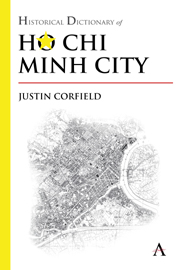Summary
Ho Chi Minh City – still often refered to by its pre-1975 name, Saigon – has, since soon after the start of French colonial rule in the 1860s, been the largest city in Vietnam in terms of its population, and also the most cosmopolitan of the cities in Vietnam. The city probably had its origins in a Cham frontier settlement called Baigaur, which was most likely a market town during the eleventh century. The area was rich in fish, buffalo and rice, and it seems likely that it was Baigaur that became a part of the Khmer Empire, and became the Cambodian port of Prey Nokor after the Khmers defeated the Chams in 1145 and sacked the Cham capital of Vijaya in Central Vietnam. Over the next few centuries there was a major movement south of the Vietnamese people.
In 1623, the Khmer king, Chay Chettha II, allowed the Vietnamese to establish a customs post at Prey Nokor. Many ethnic Vietnamese soon moved to the town, which grew in importance and in 1674, the Vietnamese from there launched an attack on Cambodia. In 1698, the town was taken over by the Vietnamese and it was renamed Gia Dinh.
The town, gradually coming to be called Saigon, grew in importance, with a predominantly Chinese township called Cholon emerging to the west. The Tay Son Rebellion saw the Tay Son rebels attack both Saigon and Cholon – indeed when the nephew of the last of the Nguyen lords who ruled at Hue, Nguyen Anh (later Emperor Gia Long), took Saigon in 1789, he ordered the construction of a large citadel there to protect the city from attack.
- Type
- Chapter
- Information
- Historical Dictionary of Ho Chi Minh City , pp. vii - xivPublisher: Anthem PressPrint publication year: 2013



